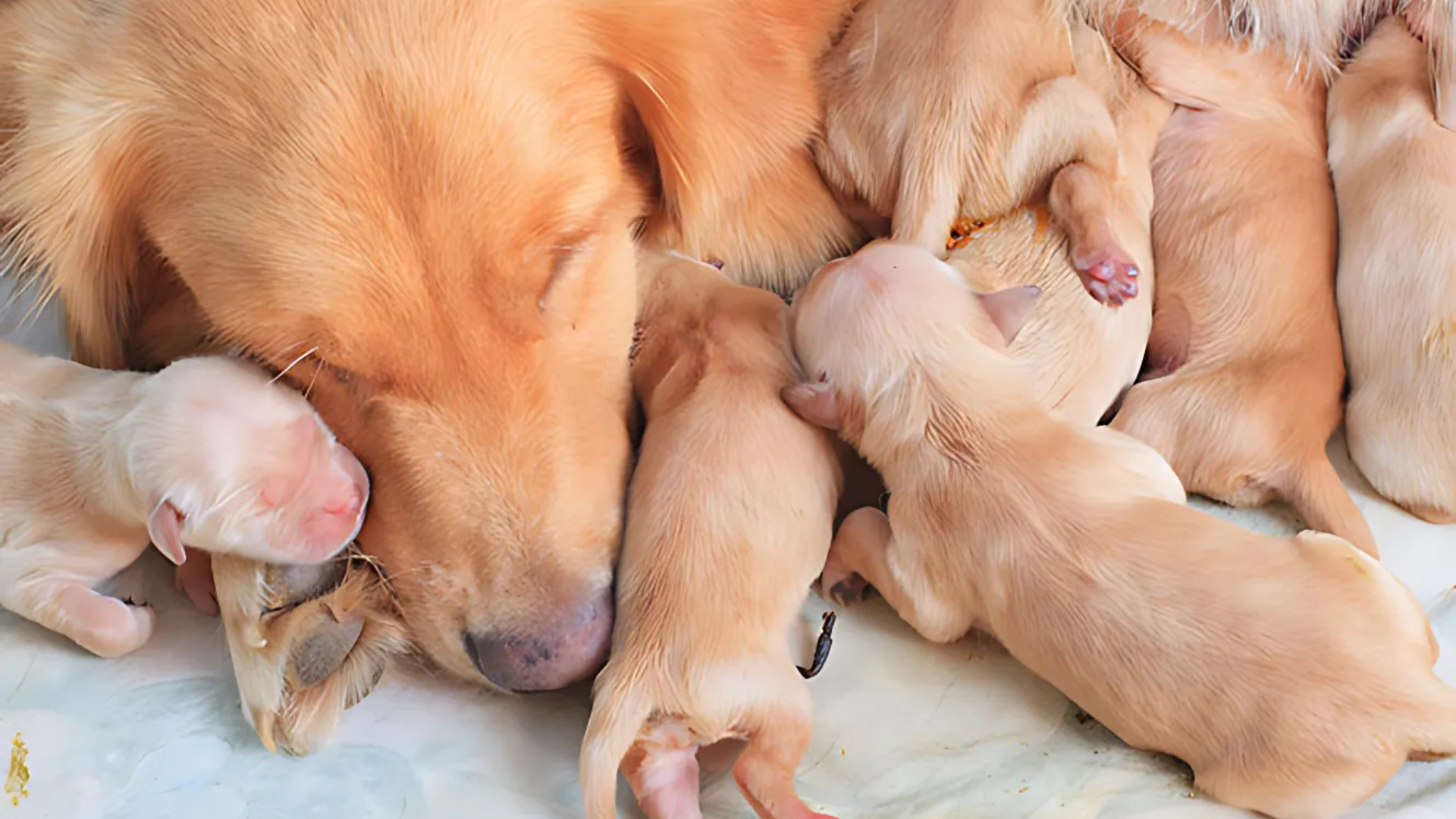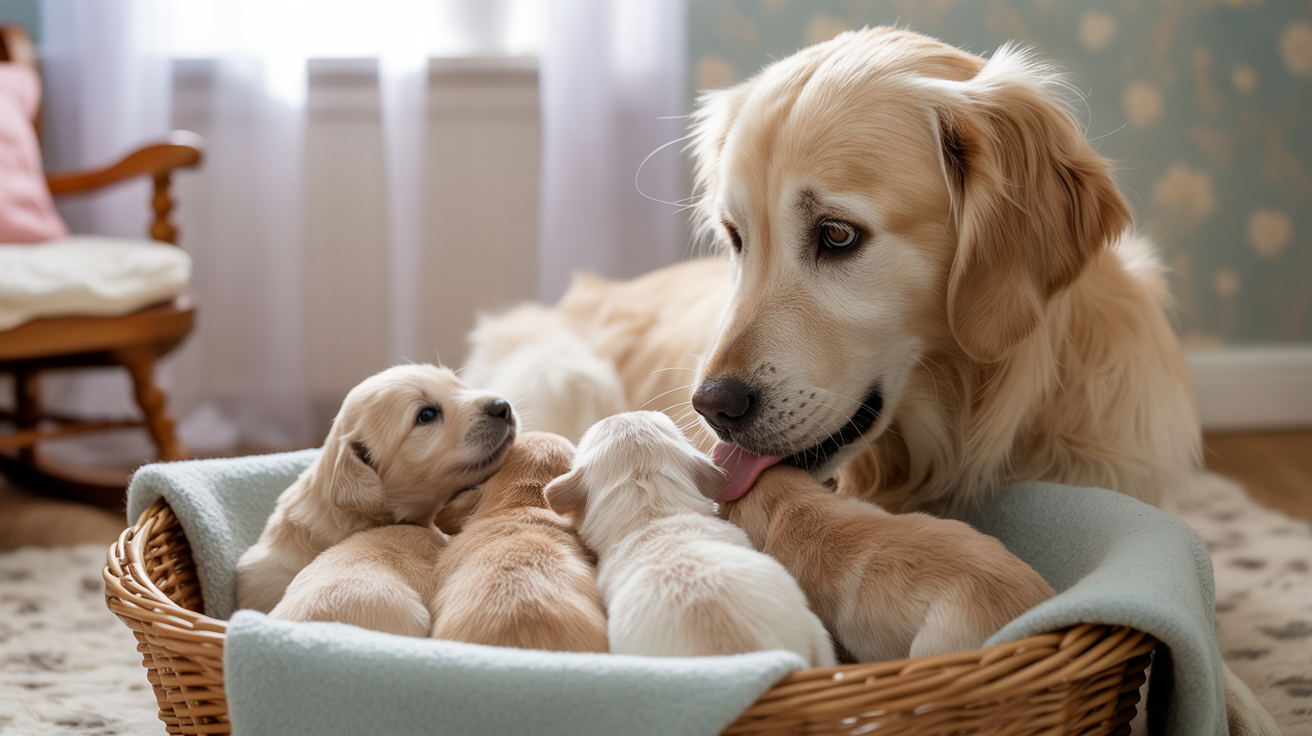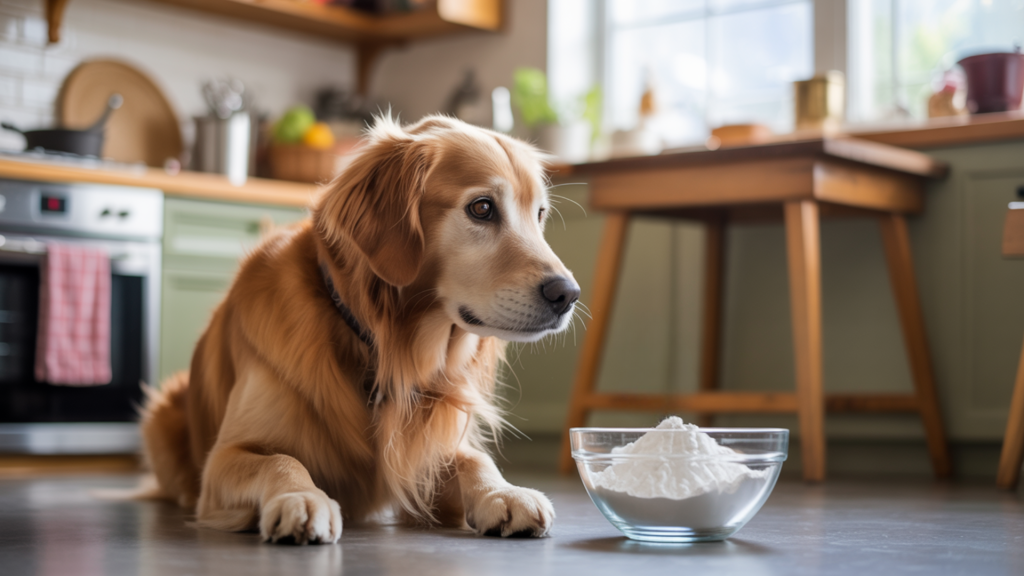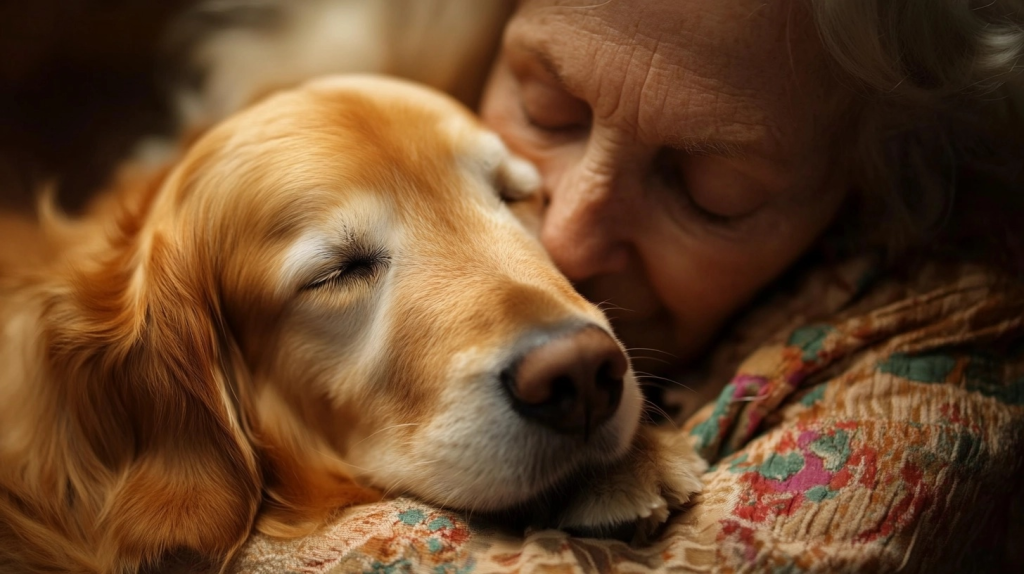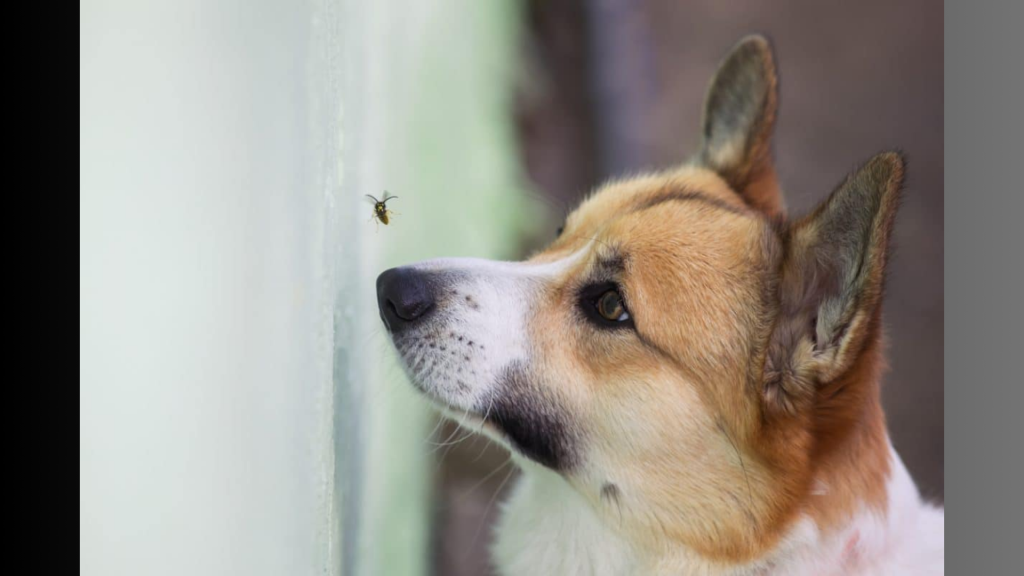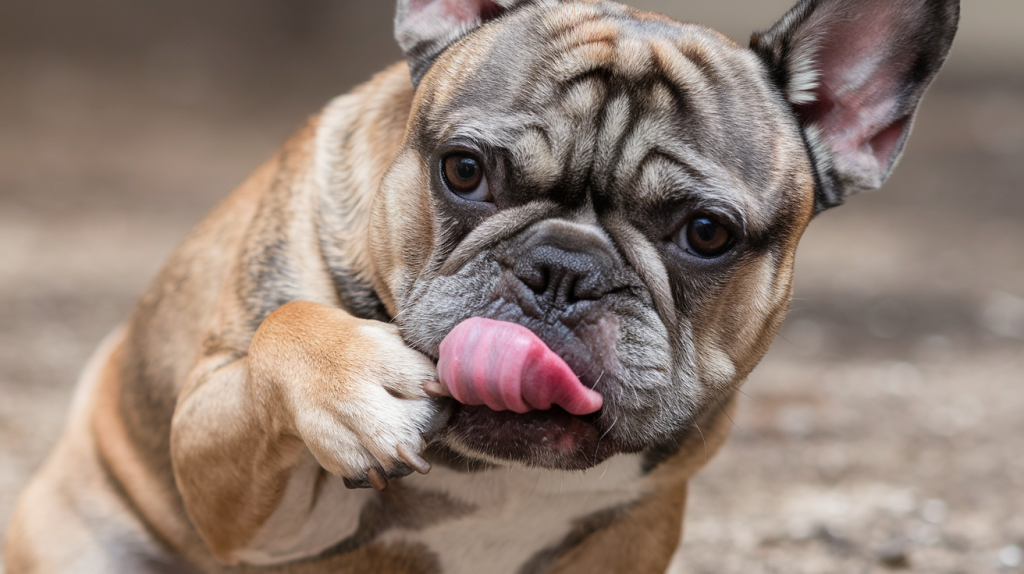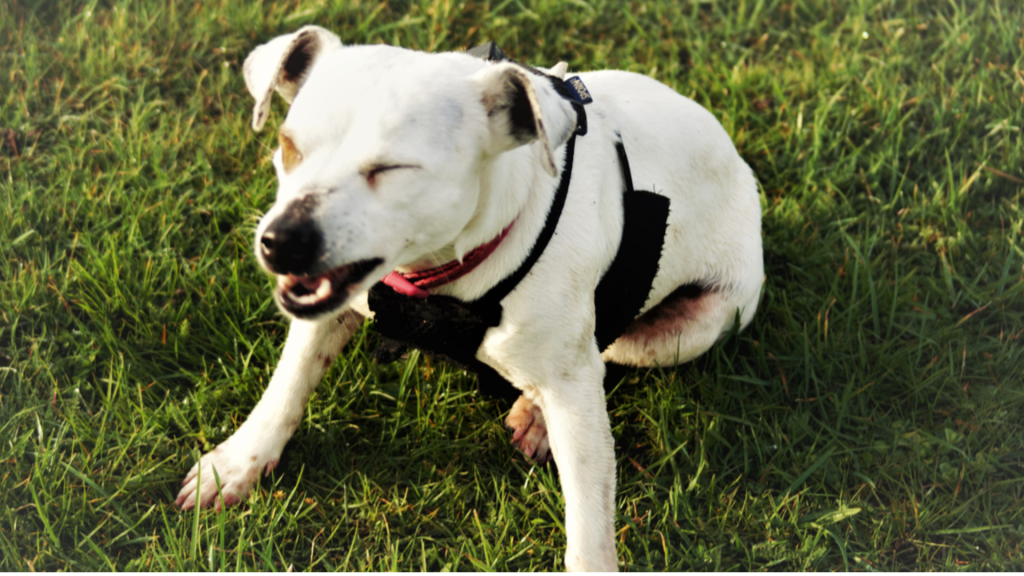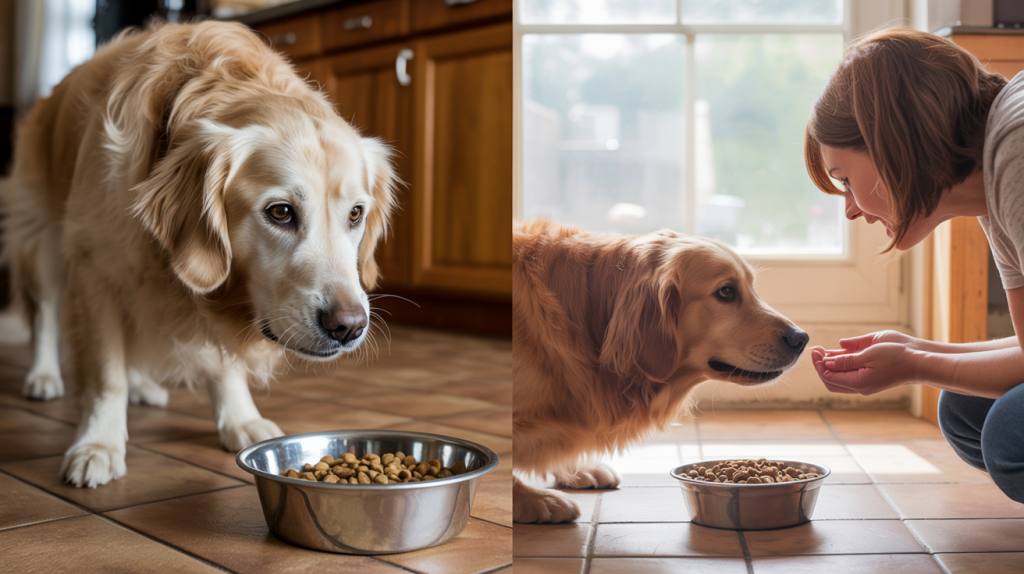Most dog owners panic when labor starts. Their beloved pet is about to give birth, and they have no idea what to expect. Will she need help? What if something goes wrong?
Here’s the thing – whelping puppies doesn’t have to be scary when you know what’s coming. Every dog owner should understand the basics before their furry friend goes into labor.
Because when you’re prepared, you can focus on supporting your dog instead of worrying about every little thing that happens during this natural process.
When is Your Dog Ready to Give Birth?
Dogs exhibit clear signs when they’re about to give birth to puppies. Most owners can spot these changes if they know what to look for.
The biggest clue? Her body temperature drops. A normal dog’s temperature is around 101°F. However, just before labor begins, it drops below 100°F. This usually happens one or two hours before the puppies come.
Some dogs stop eating during their last day of pregnancy. But this doesn’t happen to every dog. She might also start acting restless. She’ll pace around the house and look for quiet spots to hide.
Many pregnant dogs exhibit nesting behavior. They dig, scratch, and circle their chosen spot. This is her way of getting ready for the big day. Some dogs become extra clingy with their owners during this time, too.
Setting Up a Safe and Comfortable Whelping Area
Creating a safe space for whelping puppies starts weeks before labor begins. Dogs need a quiet, comfortable area where they feel secure during this important time.
Choosing the Right Spot
Pick a quiet room away from noise and other pets. A spare bedroom or laundry room works well.
Keep the temperature between 70-80 degrees with good air flow but no drafts. Choose easy-to-clean floors, as babies can be messy from birth.
Building the Whelping Box
Make the box big enough for your dog to stretch out and turn around. Walls should keep puppies in, but let mom step over easily.
Use safe materials, such as plywood with no sharp edges. Add a puppy rail 4 inches from the floor to prevent mom from crushing babies against the walls.
Keep it Warm and Comfortable
Use soft, washable towels or whelping pads on the bottom. Avoid looped fabrics that catch tiny claws. Add pet heating pads or heat lamps since newborn puppies can’t stay warm alone.
Let Mom move away from the heat when needed. Change dirty bedding right away.
Essential Supplies
Gather clean towels, scissors, dental floss, and a puppy scale before birth. Keep your vet’s phone number posted nearby. Have a puppy emergency kit with a suction bulb, a heating pad, and extra towels ready.
Safety Check
Remove electrical cords and small objects that could hurt puppies. Set up the area one week in advance so your dog can get comfortable. Test all equipment before labor starts.
A good whelping area means safer births and healthier puppies.
Understanding the Stages of a Normal Puppy Birth
Understanding the birth process helps owners recognize what is normal and what requires attention. Whelping puppies follows a predictable pattern, though timing can vary between dogs.
| Stage | What Happens | How Long | What You’ll See |
|---|---|---|---|
| Preparing | The birth canal relaxes, and the puppies move into position | 6-12 hours (up to 36 hours for first mothers) |
• Restless panting and hiding behavior • Eating less with weak contractions |
| Delivery | Strong contractions push puppies out. | First puppy: 20-30 minutes with strong contractions. |
• Hard straining with water breaking • Puppies born in sacs, the mother cleans them |
| Afterbirth | The placenta comes out after each puppy | Around 15 minutes per puppy |
• Afterbirth delivery, the mother eats them • Some bloody discharge appears |
Key Timing Facts: The entire birth process takes 3-12 hours for most dogs. All puppies should arrive within a total of 24 hours. If your dog strains for 20-30 minutes without producing a puppy, contact your vet right away.
Caring for Newborn Puppies After Birth
Once the puppies arrive, their needs become the top priority. Newborn puppies depend completely on their mother and owner for survival during their first few weeks.
- Temperature control: Puppies can’t regulate their body heat and require external warmth of around 100°F to survive during their first weeks. Use lamps or warm blankets to maintain a consistent temperature.
- Breathing check: Ensure each puppy’s mouth and nose are completely clear of any remaining birth sac material and fluids that could block their airways. Gently wipe away any mucus with a clean cloth.
- Sac removal: Help mother remove birth sacs if she doesn’t do it herself within a minute, as puppies need immediate access to air. Gently tear the sac with your fingers near the puppy’s head.
- Nursing access: Ensure all puppies can reach the mother’s milk within the first few hours of life, as early feeding is critical for immunity. Guide weaker puppies to the best milk sources.
- Warmth maintenance: Use heating pads or warm towels if the mother leaves the puppies for extended periods during the first week. Never let puppies get too cold, as this can be fatal.
- Color check: Healthy puppy tongues should be bright pink, not blue or gray, which indicates breathing problems or poor circulation. Blue coloring indicates that the puppy requires immediate attention.
- Activity monitoring: Normal puppies wiggle actively, make soft whimpering sounds, and actively seek milk by crawling toward their mother. Quiet or still puppies may need veterinary care.
Essential Post-Whelping Care for Mom and Pups
The work doesn’t stop once the puppies are born. Both mother and babies need careful monitoring during their first few weeks together.
Monitoring Mom’s Health
After whelping puppies, the mother needs close attention for several weeks. Check her mammary glands daily to ensure she’s producing enough milk. Look for signs of mastitis, like redness, swelling, or pain.
Important sign: A smelly vaginal discharge 24-48 hours after birth signals a serious infection requiring immediate vet care.
Watching for Eclampsia Signs
This life-threatening condition affects mothers with low calcium levels. It’s most common in small dogs with large litters. Watch for drooling, stiffness, muscle twitching, or seizures.
Warning technique: If you notice any trembling or unusual stiffness, contact your vet immediately – eclampsia can be fatal without quick treatment.
Puppy Development Checks
Newborn puppies should gain weight daily and become more active each week. Their eyes open around 10-14 days, and they start walking by 3 weeks. Any puppy that isn’t growing, eating, or moving normally needs vet attention.
Growth tracking tip: Weigh puppies daily on a kitchen scale – healthy puppies should double their birth weight within the first week.
Creating a Calm Environment
Keep the whelping area quiet and limit visitors during the first two weeks. Too much activity can stress the mother and cause her to reject or move her puppies. The room temperature should stay consistent at around 75°F.
Stress reduction technique: Place a “Do Not Disturb” sign near the whelping area to remind family members to keep noise levels low.
When to Call the Vet
Contact your veterinarian immediately if the mother refuses to eat for more than 12 hours, has a fever, or appears very weak. Also, call if she shows no interest in her puppies or becomes aggressive toward them.
Call for puppy emergencies, too. Any puppy that feels cold, refuses to nurse, loses weight, or cries constantly requires professional help. Early treatment can often save a puppy’s life.
Schedule a check-up for mom and all puppies within 24-48 hours after birth. Your veterinarian will ensure everyone is healthy and provide you with specific care instructions tailored to your situation.
Good post-whelping care helps ensure healthy, happy puppies and keeps mom strong during this important time.
The Bottom Line
The successful whelping of puppies depends on proper preparation and knowing what to expect.
Most dogs deliver naturally when provided with a quiet, warm space and minimal interference.
Watch for key warning signs: a temperature drop below 100°F signals labor within hours, while prolonged straining without puppies requires immediate veterinary attention.
Green discharge, even without a puppy or excessive bleeding, also requires emergency care. Your role is simple – prepare the whelping box, monitor from a distance, and intervene only when necessary.



